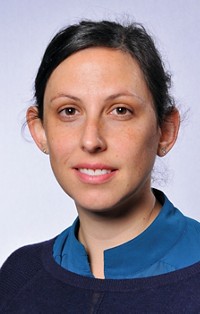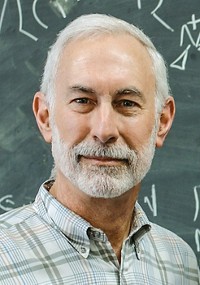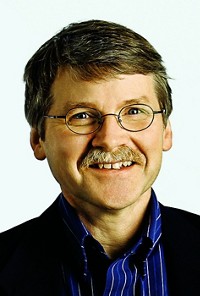Advertisement
Grab your lab coat. Let's get started
Welcome!
Welcome!
Create an account below to get 6 C&EN articles per month, receive newsletters and more - all free.
It seems this is your first time logging in online. Please enter the following information to continue.
As an ACS member you automatically get access to this site. All we need is few more details to create your reading experience.
Not you? Sign in with a different account.
Not you? Sign in with a different account.
ERROR 1
ERROR 1
ERROR 2
ERROR 2
ERROR 2
ERROR 2
ERROR 2
Password and Confirm password must match.
If you have an ACS member number, please enter it here so we can link this account to your membership. (optional)
ERROR 2
ACS values your privacy. By submitting your information, you are gaining access to C&EN and subscribing to our weekly newsletter. We use the information you provide to make your reading experience better, and we will never sell your data to third party members.
Synthesis
Arthur C. Cope Award: Nicholas J. Turro
Recipients are honored for contributions of major significance to chemistry
by Jyllian N. Kemsley
February 28, 2011
| A version of this story appeared in
Volume 89, Issue 9
Nicholas J. Turro, the William P. Schweitzer Professor of Chemistry at Columbia University, is receiving this year’s Arthur C. Cope Award “for laying the foundations for modern organic photochemistry, supramolecular photochemistry, and spin chemistry through his imaginative and pioneering research.”
Turro, 72, says he probably first became interested in chemistry as many other children do, “with explosions and fireworks and that type of thing.” But he really became captivated by his first high school physics course. “We began talking about the ideas and concepts of molecules and how they’re organized in various ways,” Turro recalls. “It was an exciting and stunning way to think about the world around us in universal terms.”
Turro then majored in chemistry at Wesleyan University, receiving a B.A. in 1960. He went on to graduate school at California Institute of Technology, where he worked in George S. Hammond’s lab. Turro earned a Ph.D. in organic chemistry in 1963. After a postdoctoral year with Paul D. Bartlett at Harvard University, Turro joined the faculty at Columbia, where he has stayed ever since.
Turro initially didn’t plan to work in photochemistry, he says, because he thought it would be too similar to Hammond’s research. Instead, he focused on synthesizing high-energy materials, in particular cyclopropanone.
“At the time, many people didn’t think you could make it,” Turro says. “It’s basically carbon monoxide and ethylene,” and, before the advent of the Woodward-Hoffmann rules, “there was no reason at the time that people could imagine it would be stable to collisions,” Turro says. But he and graduate student Willis B. Hammond (no relation to George) managed to synthesize the molecule and studied its reactions with other organic compounds.
Photochemistry still intrigued Turro, however, and when George Hammond moved on to assume administrative and industrial positions, Turro stepped back into the field, pioneering time-resolved spectroscopic techniques to study photochemical reaction pathways.
In the late 1970s, Turro experimented with the photolysis of ketones in micelles, discovering large magnetic isotope effects. He went on to design synthetic systems that could produce dramatically different products “by the application of magnetic fields whose strength is on the order of magnetic stirrer bars,” says Miguel A. Garcia-Garibay, a chemistry professor at the University of California, Los Angeles. “This research exemplified Turro’s ability to pull together ideas from interdisciplinary fields, such as colloidal and supramolecular chemistry, the theory of magnetic resonance, and the chemistry of radical pairs and photochemistry to synthesize a new framework for physical organic investigations,” Garcia-Garibay adds.
Turro continued to explore the structure-reactivity relations of guest-host supramolecular systems, investigating photochemical reactions of organic molecules adsorbed on the surfaces of micelles, zeolites, dendrimers, DNA, and other materials and documenting how those environmental interactions affect the resulting chemistry.
Turro’s “groundbreaking experiments on the steady-state and time-resolved photoreactions of molecules adsorbed on porous silica and zeolites revealed a rich array of novel supramolecular effects and demonstrated the dominating influence of size, shape, and site of the host geometry and chemical structure on the reaction channels and dynamics of reactive intermediates generated in porous solids,” Garcia-Garibay says.
Vaidhyanathan Ramamurthy, a chemistry professor at the University of Miami, highlights Turro’s work with radical pairs in supramolecular systems as particularly noteworthy. Turro demonstrated in zeolites the ability to double the enantioselectivity of the recombination of a radical pair containing 13C compared with 12C. He also showed how to use supramolecular steric effects to stabilize radical pairs in preference to their combination products.
“At a time when weak interactions and supramolecular chemistry were being recognized and systematically studied for ground-state processes by many in our community, Turro was already using them as tools to control and uncover the subtle interplay between restricted environments, chemical dynamics, and spin effects,” says Kendall N. Houk, who holds the Winstein Chair in Organic Chemistry at UCLA and received the Arthur C. Cope Award: Nicholas J. Turro in 2010.
In addition to his research to advance the field of photochemistry, Turro wrote the seminal textbook on photochemistry, which was first published in 1964. Back then, Turro put together a set of notecards with every published photochemical reaction to use as a resource for writing the text, he says. Finding the time to boil down the subject matter for the most recent iteration, published last year, was a much more difficult endeavor.
Turro has been recognized with a number of ACS awards, including the ACS Award in Pure Chemistry, an Arthur C. Cope Scholar Award, the James Flack Norris Award in Physical Organic Chemistry, and the ACS Award in Colloid & Surface Chemistry. Turro also received the Ernest Orlando Lawrence Award for chemistry and metallurgy from the Department of Energy.
Turro received the National Science Foundation Director’s Award for Distinguished Teaching Scholars in 2002 and ACS’s George C. Pimentel Award in Chemical Education in 2004. Both awards recognized his efforts to bring information technology tools—including a software program for teaching or self-learning infrared spectroscopy—to chemistry classrooms. “I’m very proud of that,” Turro says.
He is now embarking on a similar effort to promote the use of online tools to enhance research, teaching, and learning, including the use of freely available software to provide easy personal access to resources. For example, his group regularly “meets” for seminars with far-flung collaborators by using the Internet video phone service Skype. Taking advantage of such tools is a critical part of research scholarship, Turro says, to promote discussion and ensure experiments are done thoughtfully and efficiently.
In the lab, Turro continues to apply the chemical principles he has developed to an ever wider array of problems, including the development of fluorescent molecular beacons to track RNA in living cells and novel methods for the construction of polymer networks. He has also been working on the spin chemistry of small molecules such as H2 and H2O that have been inserted into fullerenes. In particular, he has found a way to polarize the spins of H2@C60 to enhance the nuclear magnetic resonance signal for medical applications. This effort again brings together the fields of supramolecular chemistry, spin chemistry, and photochemistry, but in a new way. “The combination provides a delightful platform for future research,” Turro says.






Join the conversation
Contact the reporter
Submit a Letter to the Editor for publication
Engage with us on Twitter